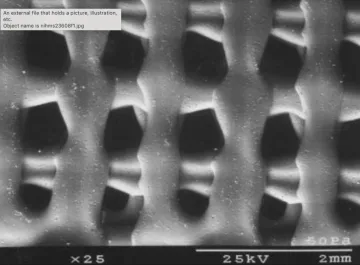The material of choice for bone repair is natural bone – either a patient's own bone tissue or that of someone else (cadaver bone). A patient’s own bone supply is limited, and cadaver bone is less ideal due to the processing needed to minimize the risk of disease transmission.
Metal implants, while readily available, can lead to bone loss and bone density reduction when left in place.
These reasons combined have catalyzed interest in polymers, calcium phosphates and other materials that can support and promote bone repair.
For example, polybutylene terephthalate (PBT)-based polymers have been shown to repair bone defects, and PBT copolymers with polyethylene oxide (PEO/PBT) have been noted to encourage bone growth. Experiments varying the ratio of those components has shown impact on critical factors of the scaffolds, such as their stiffness and dissolution rate.
Other variations, such as treating PBT implants with a tricalcium phosphate (TCP) coating, may support faster bone attachment and ingrowth as well as better scaffold stiffness for improved stability.
Our researchers are advancing these promising developments in musculoskeletal repair by exploring new approaches and materials, including:
- Free-form fabrication, which can be used to create scaffolds from CT and MRI scans and which offers the most control over pore size and geometry, both of which affect the rate of bone ingrowth
- The ability of biodegradable scaffolds to mimic the mechanical characteristics of surrounding tissue
- The first use of sensors with polymer implants and mechanical testing to better understand in vivo loads experienced by implants, bone and the interface between these materials
- Manufactured scaffolding that promotes cartilage tissue generation when seeded with MSCs and rapidly anchors to the subcondral bone in vivo
- Ways to accelerate setting times and increase the osteoinductivity of calcium phosphates used to treat bone defects
Related Publications
Tellis BC, Szivek JA, Bliss CL, Margolis DS, Vaidyanathan RK, Calvert P. Trabecular scaffolds created using micro CT guided fused deposition modeling. Mater Sci Eng C Mater Biol Appl. 2009 Jan 10;28(1):171-178. doi: 10.1016/j.msec.2006.11.010. PMID: 21461176; PMCID: PMC3065838.
Szivek JA, Margolis DS, Garrison BK, Nelson E, Vaidyanathan RK, DeYoung DW. TGF-beta1-enhanced TCP-coated sensate scaffolds can detect bone bonding. J Biomed Mater Res B Appl Biomater. 2005 Apr;73(1):43-53. doi: 10.1002/jbm.b.30177. PMID: 15682399; PMCID: PMC2288753.
Geffre CP, Ochoa J, Margolis DS, Szivek JA. Evaluation of the osteogenic performance of calcium phosphate-chitosan bone fillers. J Invest Surg. 2010 Jun;23(3):134-41. doi: 10.3109/08941930903564100. PMID: 20590384.


